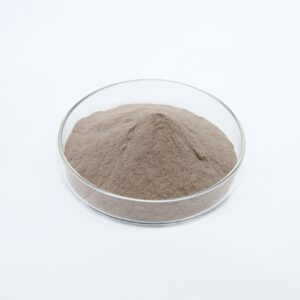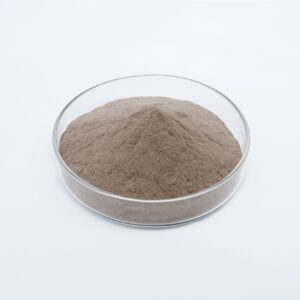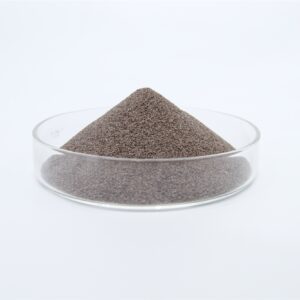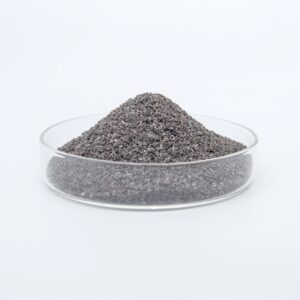Brown corundum is made of bauxite, anthracite and iron scraps through high-temperature smelting in an electric arc furnace. It is brown in color, has good toughness, microhardness of 1800-2200Kg/mm2, volume density ≥3.85g/cm3, high temperature resistance and refractoriness up to 1850℃. It is widely used in refractory materials and abrasive tool industries
| Al2O3 | ≥95.0% |
| SiO2 | ≤1.0% |
| TiO2 | ≤1.8% |
| Fe2O3 | ≤0.05% |
| Grade | A grade |
| hardness | ≥9 |
| bulk density | ≥1.75g/cm3 |
| specific gravity | ≥3.97g/cm3 |
| Magnetic content | ≤0.038% |
| application | widely used in anti-skid and wear-resistant runways, high-temperature resistant substrate coatings and refractory materials for industrial furnaces such as metallurgy and chemical industry; It is an ideal material for sandblasting, rust removal, workpiece cleaning, grinding and polishing |
1. Brown corundum has excellent hardness and wear resistance. This makes it an ideal abrasive material that can effectively remove dirt, oxide layers, scratches, etc.
2. Brown corundum has good thermal properties and chemical stability. This allows it to maintain high hardness and stability under high temperature conditions, and is suitable for the preparation of various heat treatments and refractory materials.
3. Strong wear resistance: Brown corundum sand can effectively remove surface dirt, oxides and coatings during the sandblasting process, while reducing material wear. This makes it very effective when dealing with materials that require high wear resistance.
4, Not easy to break: Brown corundum sand is more durable and not easy to break compared to other sandblasting media. This means that during the sandblasting process, brown corundum sand has less wear and can remain clean and sharp for a longer time, thereby improving sandblasting efficiency and reducing the consumption of sandblasting materials.




